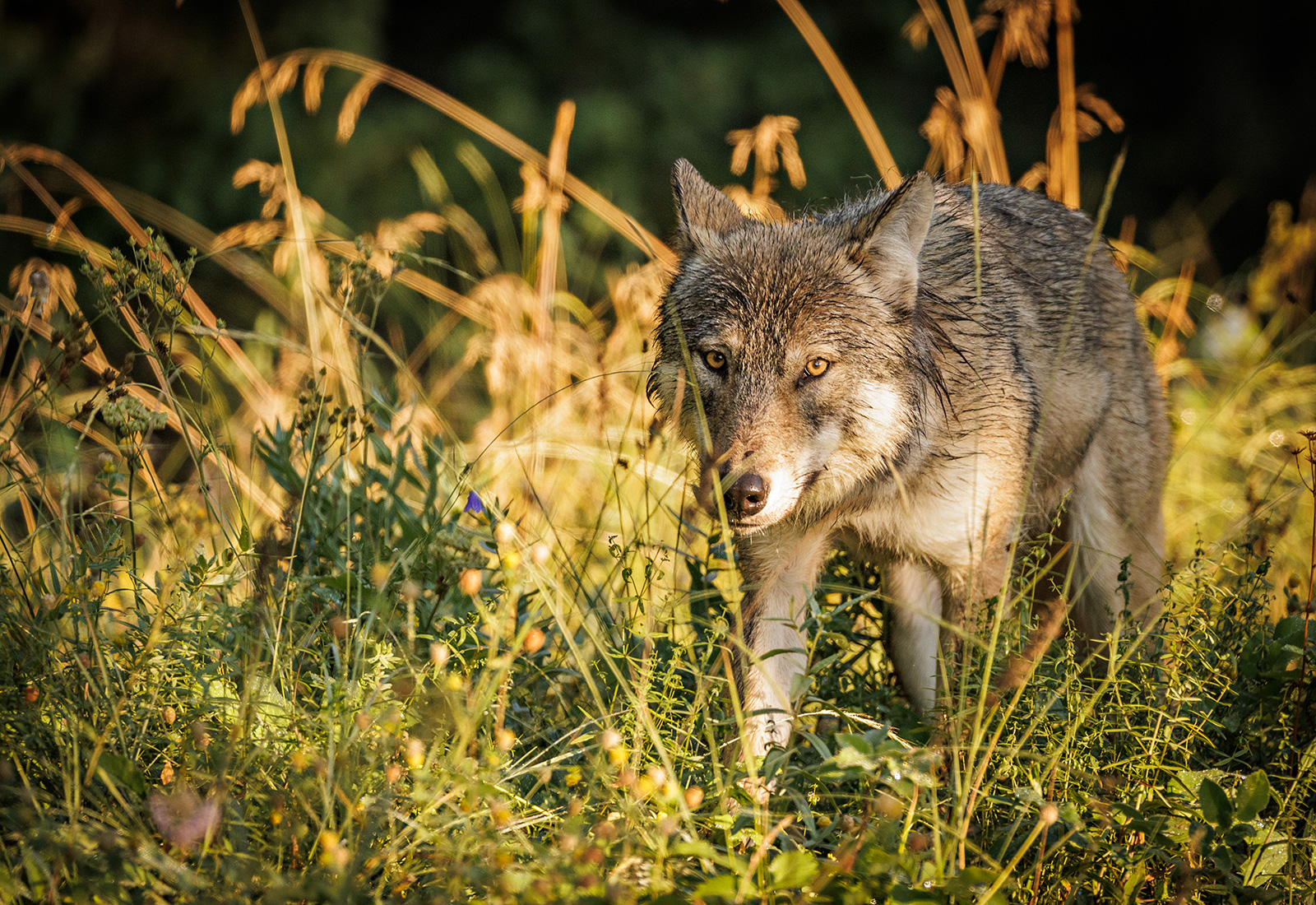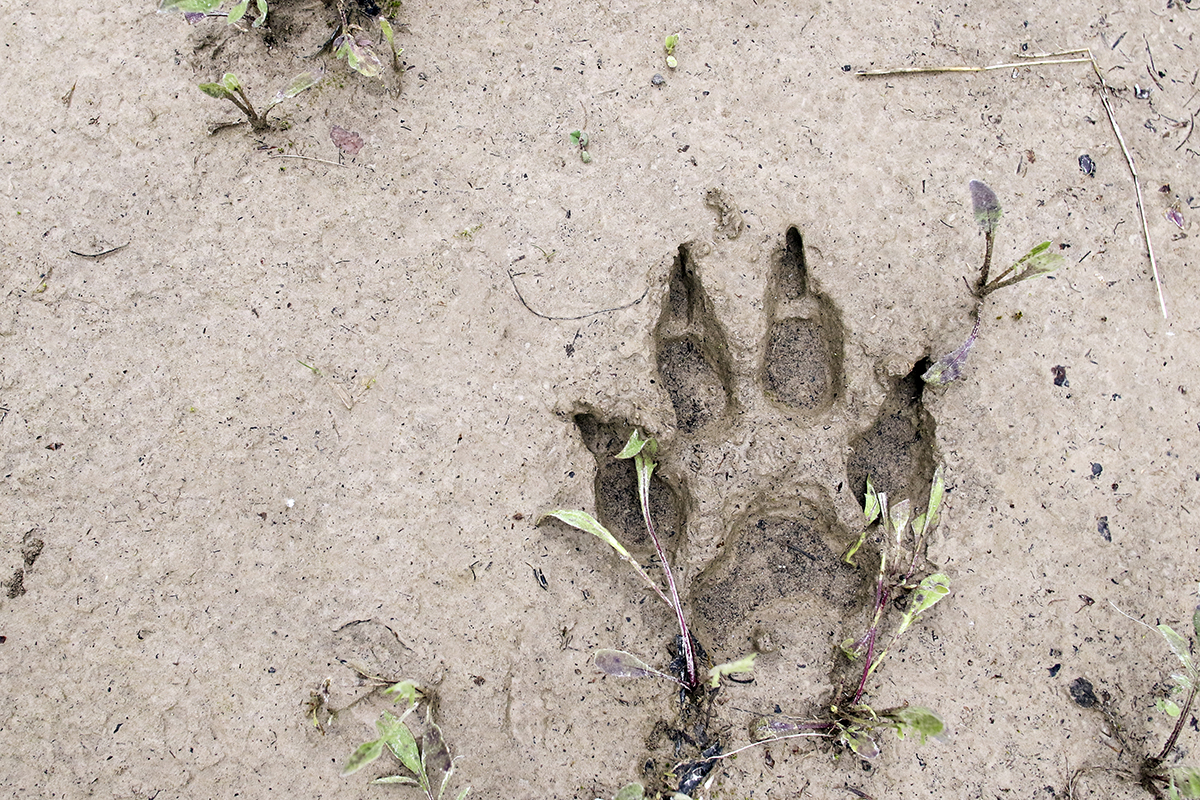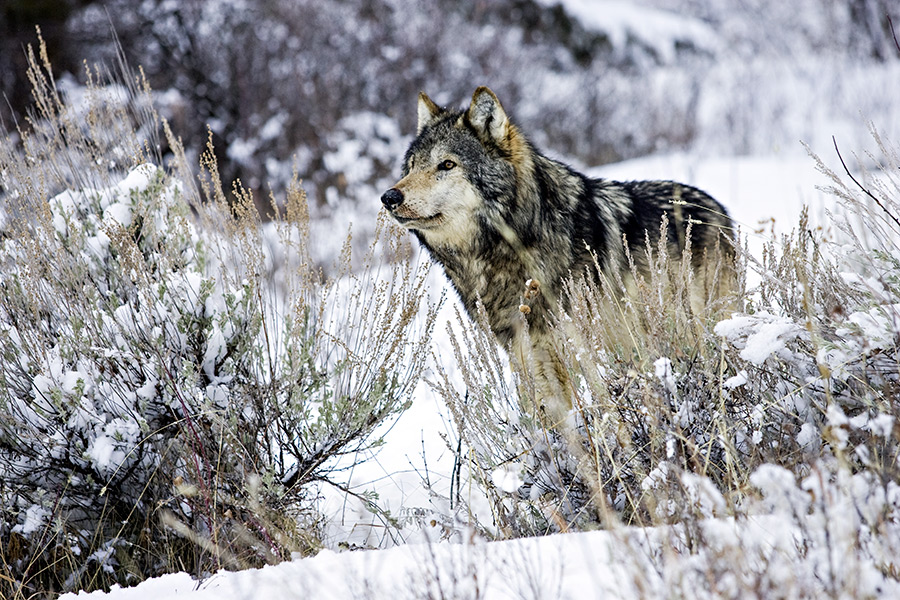Shortening Wolf Hunting Season to Save Grizzly Bears Comes at a Cost to Trappers
Stakeholders and agency officials weigh in on how a court-ordered injunction delaying the wolf-trapping season for a month will play out in northwest Montana
By Anusha Mathur
By the time Paul Antczak learned that a court-ordered injunction would delay wolf-trapping in Montana by more than a month, he’d already been setting line for weeks and was eager to capitalize on the newly expanded season. Instead, Antczak — who makes his living as a stone mason in the summer and a trapper in the winter — had to accept that, rather than checking his trapline for wolves in a few days as planned, he’d be forced to wait until January.
The news that Antczak says upended his season arrived last month when U.S. District Court Judge Donald Molloy pushed back the start date of Montana’s wolf trapping season to Jan. 1 on the grounds that trapping in November and December puts grizzly bears at risk of being maimed by wolf traps and snares. Molloy limited the wolf trapping season to fall within the period when grizzlies, which are federally protected under the Endangered Species Act, are in their dens and are therefore not at risk of being injured.
“Defendants acknowledge that grizzly bears have been caught in public wolf and coyote traps in Montana,” Molloy wrote in his order. “It is reasonably certain that more grizzly bears in Montana will be out and about during the time period and in the locations that wolf trapping is permitted under Montana’s 2023 regulations.”
The ruling came in response to a lawsuit filed by two conservation groups, the Flathead-Lolo-Bitterroot Citizen Task Force and WildEarth Guardians, which named as defendants the state of Montana, Fish and Wildlife Commission Chair Lesley Robinson and Gov. Greg Gianforte. The conservation groups’ legal action challenged the Fish and Wildlife Commission’s decision to lengthen the 2023-24 wolf trapping season by over one month.
Montana has allowed regulated gray wolf hunting, including archery, general hunting, and trapping, since 2011. However, because wolf and grizzly habitats significantly overlap, trapping, baiting, and snaring have long been controversial practices.
In past years, the wolf trapping season began on Dec. 15, but in August the Commission set the 2023-2024 season to begin in late November in most parts of the state, including northwest Montana. The new regulations also authorize individuals to trap up to 10 wolves apiece and hunt 10 others.
The debate surrounding the appropriate length of Montana’s wolf trapping season reflects a broader, and increasingly contentious, discussion involving the recovery of grizzly bears. Wildlife management agencies, hunters and conservationists are all grappling with how to strike a balance between conservation and predator control in Montana; specifically, they’re trying to determine whether efforts to reduce human-wolf conflicts have gone too far, causing collateral damage to protected species in the process.
“The ruling speaks for itself,” Mike Bader, a consultant to the Flathead-Lolo-Bitterroot Citizen Task Force, said. “The positive outcome is that bears that are still outside of their dens are not subject to being caught and maimed in wolf traps, which is vital to the recovery of grizzly bears in the Northern Rockies.”
Molloy sided with the plaintiffs on most points raised in oral arguments at the Nov. 20 hearing, agreeing that any incidental capture of a grizzly is considered an “illegal take” under the Endangered Species Act. Molloy wrote that changes to the state’s 2023 regulations, including management actions to lengthen the season, allow wolf baiting, and increase harvest quotas, also increase the likelihood of illegal takes. He added that the decision to grant an injunction was one he did not take lightly.
“A preliminary injunction is an extraordinary remedy never awarded as a matter of right, but only ‘upon a clear showing that the plaintiff is entitled to such relief,’” Molloy wrote in the order.
However, for trappers like Antczak, the ruling dealt a blow to his livelihood just days before the start of winter work. Antczak lives near the Kootenai National Forest and, prior to the court’s ruling, had been laying plans for the first day of wolf trapping in his region, which was slated to begin Nov. 27.
“It was absolutely devastating,” Antczak said. “Twenty-five percent of my annual income comes the first month of wolf trapping. There’s a lot of legwork and money involved to prepare for a season. I knew nothing about the ruling until the day it happened.”
For weeks, Antczak said his equipment had been ready for deployment, and he expressed frustration that those in favor of the injunction don’t understand the extent of the effort that goes into his pre-season prep work.
“I have 35 trapping beds dug, my anchors are in the ground right now, the wax sand is there ready to go, my anti-freeze is ready, the locations are ready to go,” Antczak said. “I’ve got wolves all over me and I can’t trap them. Every time I see a wolf track that’s $2,000 and I can’t do anything about it.”

Bader framed the injunction as merely the first step in conservation groups’ larger battle to combat loosening hunting and trapping restrictions in the state, which he said cause irreparable harm to Montana’s recovering grizzly population as well as other keystone predators like wolverines and lynx.
The Northern Continental Divide Ecosystem in northwest Montana is home to approximately 1,100 grizzly bears, according to Montana Fish Wildlife and Parks (FWP). While the population has been growing in past decades, grizzlies still occupy between 4% and 6% of their historical home range.
In the wake of Molloy’s decision, Bader said that he and his colleagues are pleased with the outcome, but plan to continue fighting for aspects of the case that didn’t go their way, including pushing for limits on the coyote trapping season.
“The problem is that Montana has gotten so gung-ho on reducing the numbers of predators and carnivores that they’ve lost sight of the collateral damage to other species,” Bader said.
The defendants in the lawsuit that prompted Molloy’s order appealed the decision to a higher court. While the ultimate outcome of the case, and others like it, have larger implications for the future of hunting and conservation in Montana, the consequences have yet to shake out. Greg Lemon, FWP’s statewide communication and education division administrator, acknowledged that, in Montana’s current state of regulatory limbo, hunters and trappers bear the brunt of the damage.
“Anytime you stop a hunting or trapping season, that’s a big impact,” Lemon said. “Not to us as an agency, but to the people who buy licenses and make plans to pursue that opportunity.”
Gray wolves are a special target for Antczak – in fact, he moved to Montana seven years ago because it’s one of the few states that allows wolf trapping. For months, he runs cameras to monitor the carnivores in northwest Montana’s backcountry, collecting data about pack movements and assessing a head count of the number of wolves and pups in a region. Antczak said the effect of the injunction extends beyond just losing a month of trapping time.
“January is the worst time of year to start trapping,” Antczak said. “In January we get a lot of rain on top of the snow and then it freezes again, so it’s really hard to keep my traps working.”
Describing himself as “pro-wolf,” but also “pro-consumptive harvest and balance,” Antczak said he feels conservation groups have lost sight of that second goal.
“The big misconception about trappers is that we’re basically heartless killers who don’t care about the animal,” Antczak said. “I was born and raised as a trapper. The injunction is not allowing me to manage these predators like they should be, for the sake of all wildlife.”
An appellate court is expected to hear FWP’s case in January; however, until then, the trapping season remains halted. Lemon said that even with ample hunting opportunities in Montana, a shorter trapping season means wolf harvest levels won’t be as robust.
“Northwest Montana has one of the highest, if not the highest harvest quotas in the state. We were anticipating that over the course of the season that would be one of the higher levels of harvest,” Lemon said, adding that the injunction leaves an open-ended question as to how the harvest will transpire.
Bader counters that it was unreasonable and irresponsible for the Montana Fish and Wildlife Commission to set a floating season start date as early as November. He said the bigger story in this case is climate change – with higher temperatures, bears are staying out later in the fall and early winter and emerging from hibernation earlier in the late winter and early spring. He argued that, given the intensifying environmental pressures on Montana’s wildlife, a six-week trapping season is more than fair.
“Montana’s general hunting season is one of the longest in the country,” Bader said. “A lot of states only have a one-week or two-week hunting season, some states only a few days. It’s unreasonable to let hunters hunt for half of the year.”
Molloy found this argument compelling.
“Plaintiffs present evidence that nearly 40% of the grizzly bears in Montana have historically been active outside their dens after November 27 or before March 15, and they convincingly argue that this trend is likely to increase due to a warmer climate,” Molloy wrote.

Antczak countered that, if trappers follow the proper regulations and take their jobs seriously, their profession shouldn’t pose a threat to grizzly bears. In short, he feels that responsible trappers are being unfairly punished by the injunction.
“I have grizzlies on camera from years past and they walk right by my stuff,” Antczak said. “They don’t even bother with the bait I have. What [the plaintiffs] have done is basically just weaponize the Endangered Species Act.”
Lemon emphasized that the decision to set the length of a trapping season is a thorough process, with significant public input. Gray wolves were federally delisted from the Endangered Species Act in 2011 and have since been managed under state authority. Decisions such as setting the length of a trapping season are a participatory endeavor during which state authorities hold public meetings and open their inboxes up to public comment.
“We’re working to communicate and help people understand how seasons, structures, regulations and cooperatives are set and how people can engage in that process to make their voices heard,” Lemon said. “The commission process is a very public process, and the legislative process is a very public process.”
Bader said FWP and the state’s decision-making process fell short of the mark, and that evidence presented at the hearing demonstrated that they didn’t do enough to take federally mandated species conservation into account. His goal is to prevent the overlap between trapping and the time when grizzlies are not hibernating.
“In the state’s own document files in the court case, it showed that four different grizzly bears in 2021 alone were identified with missing toes, feet, lower arms, and two other grizzly bears that same year were caught in coyote traps,” Bader said. “Six trap-related incidents in one year; and that’s just the tip of it because those are just the ones that were reported … The state just has to figure out a better way, because the way they’re doing it now has too many risks involved for the other species.”